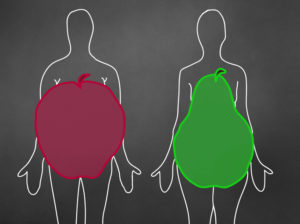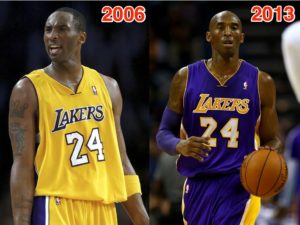This is a topic I wrote about in grad school and one that I found interesting. I went back and read what I wrote and looked at the latest evidence to see where we stand today…
In research individuals who are metabolically healthy and obese are referred to as the metabolically healthy obese (MHO) phenotype (just means observable characteristics from genetics). This was first described in a 2001 literature review of research dating back to 1947.1
Despite being obese these individuals are otherwise healthy in terms of metabolic health and have a lower risk of developing cardiovascular disease (CVD) than other obese individuals. There is not a universal definition of metabolic health due to some disagreement among experts.2 For our purposes we will define it as:
- Normal Blood Pressure Levels
- Normal Insulin Sensitivity
- Normal Cholesterol & Triglyceride Levels
- Normal Inflammation, Liver Enzyme, and Immune Profiles
The phenotype is more prevalent among women than men.2
Problems with using BMI alone
The research on this topic largely relies on BMI for classifying individuals as normal weight, overweight, or obese. BMI sometimes falsely classifies muscular people as obese or overweight as only height and weight are used to determine it. On the flip side those with a BMI that does not classify them as obese or even overweight may have high bodyfat concentrated in the abdomen. A systematic review and meta-analysis concluded:
“Commonly used BMI cutoff values to diagnose obesity have high specificity, but low sensitivity to identify adiposity as they fail to identify half of the people with excess BF%.”3
A 2012 study included BMI and bodyfat % (BF %) as determined by hydrostatic weighing and/or calipers (limitations of these aside) for classifying participants.
By including BF % the researchers more than doubled the number of participants classified as obese. Another interesting finding from this study which looked to determine the role of fitness indicated that obesity and the risks associated with it exist on a continuum. That is the MHO participants tended to have slightly lower levels of adiposity (waist circumference, BMI, and BF % were all lower) and higher levels of fitness.4
Excess bodyfat does not affect everyone the same way
Some individuals, likely due to genetic predisposition handle bodyfat better than others.5,6 Some of the traits of those who fit the MHO phenotype are:
- Lower visceral fat accumulation (this is “deep” fat wrapped around major organs, more dangerous than subcutaneous fat)
- Higher birth weight
- Adipose (fat) cell size
- Gene expression-encoding markers of adipose (fat) cell differentiation.
- Greater vascularization in adipose (fat) tissue.5

Many of you have likely seen the image below before. The apple shape is indicative of greater adiposity around the abdomen where individuals with this body shape tend to have larger waists (referred to as central adiposity). If you’re prone to a body-fat distribution like the apple shape, you should do your best to stay lean.
If you are MHO, time will catch up to you
Studies with more than 10 years of observation found that the majority who were classified as MHO eventually developed metabolic syndrome.
Why?
A high physical fitness level can attenuate some of the effects of higher bodyfat. It’s possible one’s ability to remain metabolically healthy and maintain a lower risk of developing CVD while being obese relies on one’s ability to remain active.4,8
My speculation is that with more years carrying excess bodyweight, comes more wear and tear on joints limiting one’s ability to remain physically fit. In fact, being as little as 10 pounds overweight increases force on the knee 30-60 pounds with each step.9
Even elite athletes understand that there is a point of diminishing returns with excess weight. Kobe Bryant did it in 2007 and in 2014 Lebron James, Dwayne Wade, and Carmelo Anthony did the same.10
They themselves or someone smart that trains them informed them that it would be wise to shed excess weight as the rigor of an 82 game (plus playoffs) season will eventually negatively impact joint health.
Summary / Take home
- If you’re an athlete, understand that with weight gain there is a point of diminishing returns in terms of strength and of course speed.
- If you’re carrying extra weight that is not benefiting you, burn the fat as it’s not worth the extra stress on your joints.
- Be mindful of how your body stores excess bodyfat. I recommend calculating your waist to hip ratio to determine where you stand.
- Being classified as “normal weight” does not equate to metabolic health or having a lower risk of CVD. Remember, visceral fat can be dangerous so burn the fat and build some muscle!
References
- Sims EA. Are there persons who are obese, but metabolically healthy? 2001 Dec;50(12): 1499-1504.
- Lotta LA, Abbasi A, Sharp SJ, et al. Definitions of metabolic health and risk of future type 2 diabetes in body mass index categories: a systematic review and network meta-analysis. Diabetes care. 2015;38(11):2177-2187. doi:10.2337/dc15-1218.
- Okorodudu DO, Jumean MF, Montori VM, et al. Diagnostic performance of body mass index to identify obesity as defined by body adiposity: a systematic review and meta-analysis. Int J Obes (Lond). 2010 May;34(5):791-9. doi: 10.1038/ijo.2010.5.
- Ortega FB, Lee D, Katzmarzyk PT, et al. The intriguing metabolically healthy but obese phenotype: cardiovascular prognosis and role of fitness. Eur Heart J. 2013;34(5):389-397. doi:10.1093/eurheartj/ehs174.
- Muñoz-Garach A, Cornejo-Pareja I, Tinahones FJ. Does Metabolically Healthy Obesity Exist? Nutrients. 2016;8(6):320. doi:10.3390/nu8060320.
- Sahakyan KR, Somers VK, Rodriguez-Escudero JP, et al. Normal Weight Central Obesity: Implications for Total and Cardiovascular Mortality. Ann Intern Med. 2015;163(11):827-835. doi:10.7326/M14-2525.
- Primeau V, Coderre L, Karelis AD, Brochu M, Lavoie ME, Messier V, Sladek R, Rabasa-Lhoret R. Characterizing the profile of obese patients who are metabolically healthy. Int J Obes (Lond). 2011;35:971–981
- Katzmarzyk P, Church T, Janssen I, Ross R, Blair S. Metabolic syndrome, obesity, and mortality: Impact of cardiorespiratory fitness. Diabetes Care. 2005;28:391–397. doi: 10.2337/diacare.28.2.391.
- Bartlett S. Role of Body Weight in Osteoarthritis. Johns Hopkins Arthritis Center. http://www.hopkinsarthritis.org/patient-corner/disease-management/role-of-body-weight-in-osteoarthritis/. Updated March 27, 2012. Accessed December 6, 2017.
- Manfred, T. The NBA’s Best Players Are Losing A Bunch Of Weight, And It’s All Because Of Kobe Bryant. Business Insider. http://www.businessinsider.com/lebron-carmelo-lose-weight-2014-8. Published August 18, 2014. Accessed December 6, 2017.

